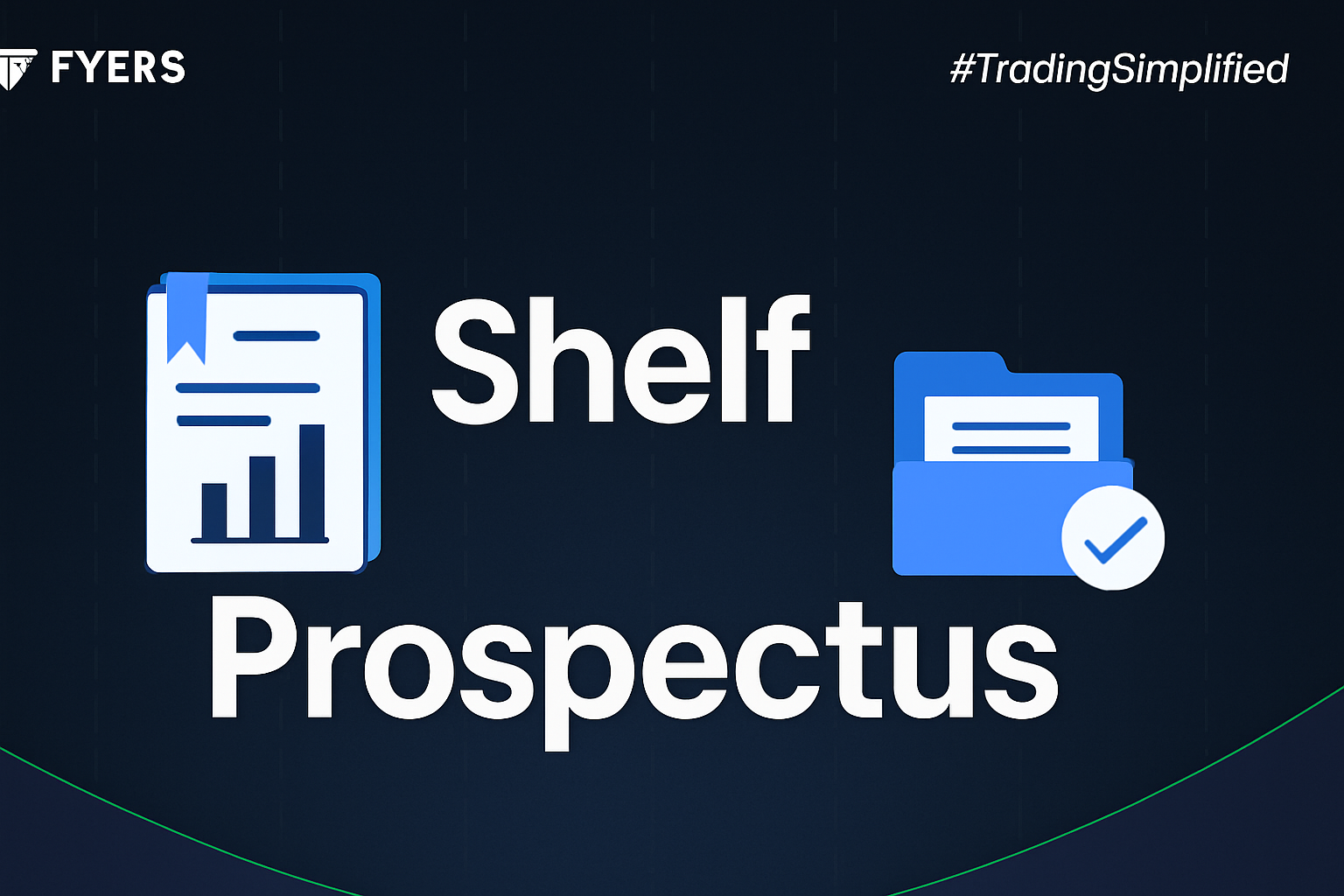

 31 Aug, 2025
31 Aug, 2025
 4 mins read
4 mins read

When companies plan to raise funds from the public markets, they must provide detailed information to potential investors. This information is shared through a document known as a prospectus. Among the various forms of this document, one important variant is the shelf prospectus. It is especially useful for firms looking to issue securities multiple times over a certain period without going through the full approval process every single time.
In this blog, we explain what it is, why it matters, and how it compares to other types of prospectuses such as the red herring prospectus.
A prospectus is an official offer document released by companies that intend to raise money from the public. It provides vital details such as:
The company’s financial position
Business risks
Purpose of raising funds
Rights and obligations of investors
In India, the Securities and Exchange Board of India (SEBI) regulates how and when companies can issue such documents. There are different forms of prospectuses, including the draft prospectus, red herring prospectus, and the shelf version. Each serves a unique purpose in the capital-raising process.
A shelf prospectus is a special kind of IPO disclosure document that allows a company to raise capital through multiple public issues over a fixed period—usually one year—using the same filing. Instead of preparing and getting approval for a new prospectus for every issue, the company can rely on the existing one.
This system makes the fundraising process more efficient and less time-consuming. It is commonly used by large financial institutions, public sector undertakings, and corporations with frequent capital requirements.
The main objective of a prospectus in this format is to streamline the fundraising process. Some of the specific goals include:
Efficiency – Companies save time and costs by avoiding repeated filings.
Flexibility – They can issue securities in tranches based on market conditions.
Transparency – Investors still receive all essential disclosures upfront.
Market readiness – Organizations remain prepared to capitalize on favorable conditions quickly.
Here’s a simplified breakdown of the process:
Initial filing – The company prepares and files the document with SEBI.
Validity period – Once approved, it remains valid for up to one year.
Multiple issues – Within this period, the company can raise funds several times without submitting a fresh prospectus each time.
Information updates – Companies must file an information memorandum before each new issue to disclose any material changes since the original filing.
In essence, it works as a master document, while the information memorandum acts as an update for subsequent offerings.
It’s important to understand the difference between shelf prospectus and red herring prospectus, since both are common in India’s IPO framework.
Shelf Prospectus – Allows multiple issues over time under one approval. Primarily used by banks, financial institutions, and large corporations.
Red Herring Prospectus – Used before an IPO to provide preliminary information, including a price band, but without disclosing the final issue price.
In short, the shelf version is about convenience in repeated fundraising, while the red herring prospectus is about flexibility in pricing and timing of a single IPO.
This format offers clear benefits for both issuers and investors:
Time-saving – Companies avoid preparing new documents for every issue.
Cost-effective – Reduced compliance expenses and regulatory work.
Investor trust – Disclosures remain detailed and transparent.
Quick response – Firms can take advantage of favorable market opportunities without delay.
Despite its advantages, this system has a few drawbacks:
Limited validity – Usually applicable only for one year.
Need for updates – Companies must still file information memoranda for each tranche, which requires effort.
Not suitable for all issuers – Typically restricted to certain institutions or larger firms.
Market risks – Even with flexibility, companies are still exposed to changes in investor sentiment or economic conditions.
In India, this model has been successfully used by several major organizations. For instance:
Public sector banks often rely on this system when raising funds through bonds.
Financial institutions such as IDBI Bank and NABARD have also issued securities using this method.
Corporates in sectors like infrastructure and energy sometimes turn to this filing to raise money in multiple rounds.
These examples show how the approach helps institutions remain agile in dynamic market conditions.
A shelf prospectus is a practical and efficient way for companies—especially large banks and financial institutions—to raise funds multiple times within a year. It reduces costs, saves time, and provides flexibility, while still maintaining transparency for investors.
However, it is not without limitations, such as the need for regular updates and restricted eligibility. Comparing it with the red herring prospectus helps highlight its unique role in the Indian IPO ecosystem.
For investors, understanding this type of disclosure document is essential. It ensures better decision-making when evaluating opportunities in the primary markets.
It is a type of prospectus that allows companies to issue securities multiple times within a year using a single approval from SEBI.
Primarily financial institutions, banks, public sector undertakings, and large corporations are eligible.
The shelf format allows repeated fundraising over time, while a red herring prospectus is a preliminary document for a single IPO, showing details like the price band.
Its main purpose is to provide investors with transparent information about the company, risks, and objectives of raising funds, so they can make informed decisions.
Calculate your Net P&L after deducting all the charges like Tax, Brokerage, etc.
Find your required margin.
Calculate the average price you paid for a stock and determine your total cost.
Estimate your investment growth. Calculate potential returns on one-time investments.
Forecast your investment returns. Understand potential growth with regular contributions.